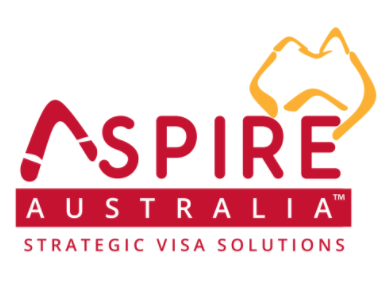Living and working in Australia can provide you with enormous opportunities for career development, experiencing a different work culture and of course living in a unique environment. To achieve your employer sponsored visa, however, requires navigation along a path strewn with boulders, hurdles and potholes. Before embarking on your journey, therefore, it is advisable to make yourself aware of the complexities, process and timing, so that you can avoid common pitfalls and achieve your employer-sponsored visa for Australia.
Let’s take a look at the 6 most common pitfalls you are likely to encounter.
1) Not meeting the eligibility criteria
If you are not achieving a visa at the end of your journey, then your journey has been wasted. Checking your eligibility for the target visa before you get started is the obvious starting point, but one that so many prospective applicants want to rush past, in the excitement of receiving a job offer by an Australian company. Depending on the visa you intend applying for – the 407 Training visa, the 482 Temporary Skills Shortage, the 494 Skilled Employer Sponsored Regional visa or the 186 Employer Nomination visa – you will need to provide evidence to meet the specific criteria. These may include having the necessary qualifications and / or work experience to meet the criteria for the occupation; having a minimum amount of paid employment at the skill level that is either relevant or in the occupation; having appropriate English language level; having a formal skills assessment.Each of these elements has its own criteria. The employment requirement for one visa may be vastly different from the employment requirement for another visa. For the 482 visa, for example, you must have two years’ full time equivalent relevant experience. But for the 494 visa, you must have experience in the nominated occupation.
Failure to meet even one of these criteria will result in visa refusal.
2) Not providing sufficient evidence
Once you know what criteria you must meet, you must then provide sufficient and satisfactory supporting evidence. Applicants often flounder at this point. You may know what you did in your job, but a two-line service certificate will not inform a decision-maker about the tasks you undertook. Understanding the evidence requirements for the Australian processing department, understand the Australian context and norms in this regard. Cultural differences will often require you to provide material that may not be usually needed in your country.
There is no point being eligible, if you can’t prove it!
3) Not being aware of processing times
Processing times for employer-sponsored visas can vary greatly depending on the specific visa category you are applying for and the processes required to be completing leading up to visa lodgement. Both you and your proposed employer need to know the time lines involved. If an employer needs you in Australia next week but the visa process will take three months, then either the visa strategy needs to be adapted or expectations changed. Finding this out at the last minute may jeopardise your sponsorship so it is important to be aware of these processing times and to plan accordingly.
Onshore applicants also need to be aware of processing time frames and how this may impact on the expiration of their current visa.
4) Not being aware of the conditions of the visa
Australian temporary residence visas will be issued with conditions. Breach of any visa condition may lead to cancellation of your visa and the end of your dreams of living and working in Australia. Conditions may include the location of your workplace, the position you are filling, the holding of insurances. Ensure you understand the visa conditions before you get started and ensure you are comfortable with your ability to meet those conditions.Your employer must also be on board with the conditions so that you are not ‘forced ‘ to be in breach and jeopardise your visa.
That is a lose – lose for both you and your employer.
5) Not understanding your visa pathways
Whilst you may be super keen to accept the first job offer from an Australian employer that comes along, understanding the parameters of a specific visa and where it may or may not lead you, is vital if you have long term goals for Australia.For example, if the occupation in which your employer nominates you is on the STSOL (Short Term Skilled Occupations List), are you aware of the duration of the visa, the ‘renewal’ limitations, and the fact that it may not lead you to a permanent residence outcome? Understanding the available pathways, or lack thereof, may lead you to negotiate a different work location, position or even employer. Whilst there is some ability to be flexible on the run, many visa holders waste years of their lives by not having a suitable strategy in place from day one.
Find out about where any specific visa option may take you, decide whether that meets your own long term goals and needs and seek advice to set an action plan from the start.
6) Not being aware that there are two parties to the process
Of course you know that you are to be sponsored by an employer. But are you aware of the obligations that rest on the shoulders of that employer? If the employer fails to meet its obligations, your visa may be in jeopardy. You cannot expect to be privy to sensitive commercial information about your employer, but you can expect to have an open discussion about the sponsor’s obligations and the risks associated with non-compliance.To be granted permission to sponsor, employers have many steps to take including possibly advertising the position in a specified way for a specified period, providing evidence of financial capacity and proving that the nominated position is genuinely available within the business. Just as you need to know the criteria and provide supporting evidence, so do your employers.Once your visa is granted, employers must, for example, only employ you in the nominated occupation at the nominated location and pay at least the nominated salary. They must not employ you through unrelated entities, have you doing a different job or work in a different location. At least not without getting the appropriate approvals first.
Ensuring your employer has access to competent migration advice will be an important part of you ensuring the success of your employer sponsored visa process.
Australia may be in the middle of the largest skills shortage of the millennium, but that does not mean that criteria are no longer applied or Australia’s tough visa standards are being relaxed. Company sponsorships and nominations will still be rejected where there is ineligibility or insufficient evidence, as will employer sponsored visas.
Don’t let your application be unnecessarily held up or worse, rejected! Work with a professional migration agent to ensure you set yourself up for success.
Arm yourself with the knowledge to succeed. Aspire Australia’s newly released 2023 guide “Navigating your Employer Sponsored Visa Pathway – Living and working Down Under! provides an excellent starting point for your journey.
For specific advice about your employer sponsorship options, feel free to contact us for an appointment









